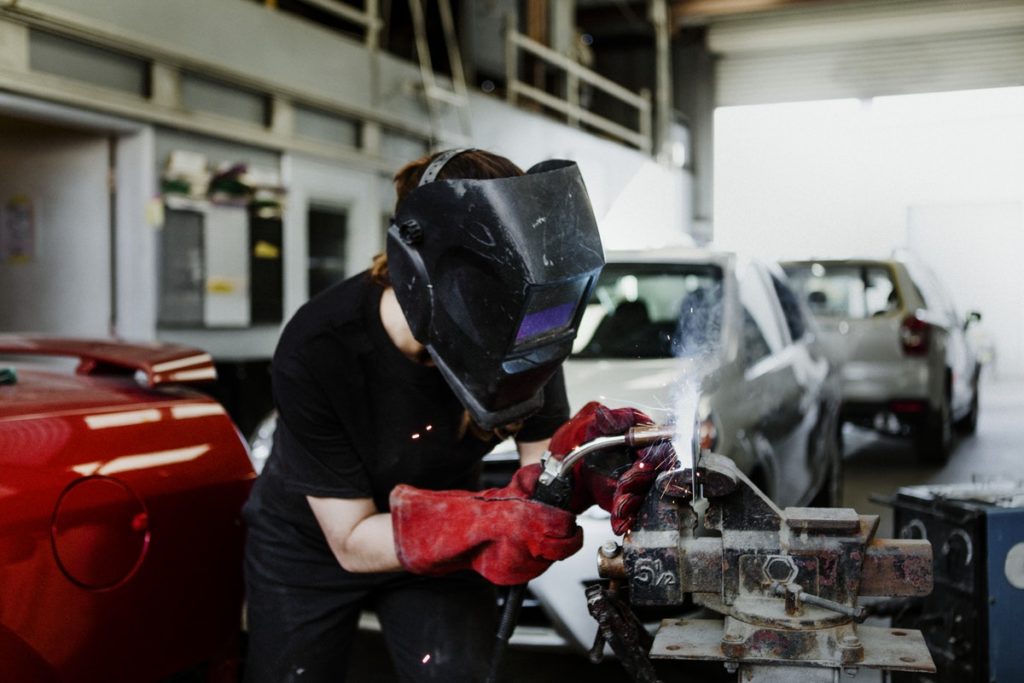Inhaling welding fume has long been known to be hazardous to health.
However, new scientific evidence from the International Agency for Research on Cancer (IARC) has found that exposure to even mild steel welding fume can cause lung and possibly kidney cancer. This classifying of mild steel welding fume as a human carcinogen has been endorsed by the Workplace Health Expert Committee, set up by the Health and Safety Executive (HSE) to provide it with independent workplace health expertise.
The developments above have prompted the HSE to issue a safety alert to employers carrying out welding activities, including mild steel welding.
UPDATE November 2019:
Revised HSE guidance
Following the alert issued in February 2019, the HSE has now published revised task-specific COSHH guidance aimed at helping employers to adequately control any welding fume released, plus web pages on how to manage exposure to welding fume.
Protecting workers
To protect workers, the HSE:
Is raising control standards on cancer-causing welding fumes with immediate effect.
Will no longer allow welding work, regardless of the time a job takes, without suitable exposure control measures being in place.
This is because there is no known safe exposure level and the IARC evidence shows general ventilation does not achieve the necessary control. The HSE stress all businesses carrying out welding activity must:
Make sure effective engineering controls are provided and correctly used to control welding fume exposure.
Provide adequate and suitable respiratory protective equipment (RPE) - where engineering controls do not adequately control fume exposure.
Specific action
The HSE alert specifically requires that:
- Exposure to welding fume must be adequately controlled using engineering controls – typically local exhaust ventilation (LEV).
- Suitable controls must be provided for all welding, irrelevant of duration – including welding outdoors.
- Where engineering controls alone cannot control exposure, then adequate and suitable RPE should be used to control the risk associated with any residual fume.
- All engineering controls must be correctly used, suitably maintained and, where required, thoroughly examined/tested.
- RPE use is subject to an RPE programme – ensuring RPE remains effective in protecting the wearer.
The new evidence and increased HSE control of fume exposure should be reflected in your risk assessment and current site control measures. Existing controls should be replaced or improved to reflect the reclassifying of mild steel welding fume as a human carcinogen. It must be understood that general ventilation will not achieve the required welding fume exposure control; controlling carcinogenic fumes requires more effective engineering controls, such as LEV, if welding indoors.

Local exhaust ventilation
LEV allows for at-source fume extraction and prevents welding fume spreading into the surrounding workplace and entering a worker’s breathing zone.
If LEV is unable to control fume capture, the HSE states that RPE is also required. Appropriate RPE should also be provided for welding outdoors.
Welding is one of the top causes of work-related cancer. The British Occupational Hygiene Society estimate that it causes around 150 deaths a year in the UK. It also estimates that some 40 to 50 welders are hospitalised each year with pneumonia as a result of breathing metal fume at work.
3 tips for effective health and safety when welding 
The need for effective welding exposure control is critical. To ensure you comply with the HSE’s raised expectations, make sure:






